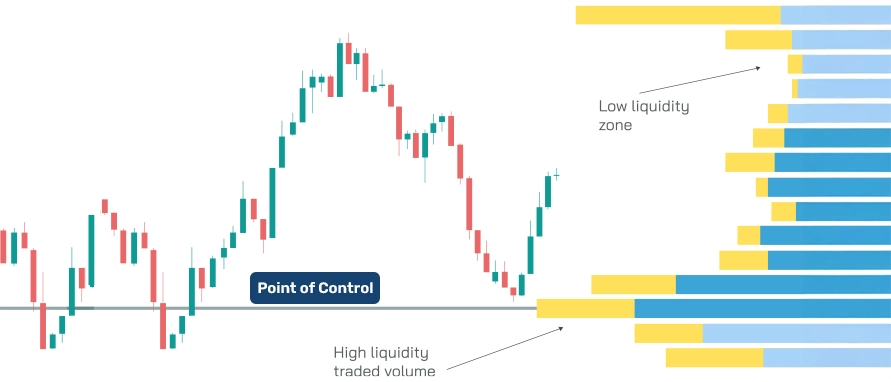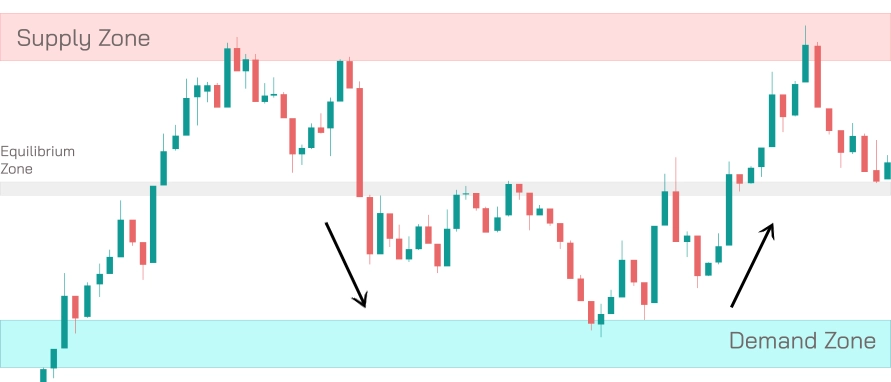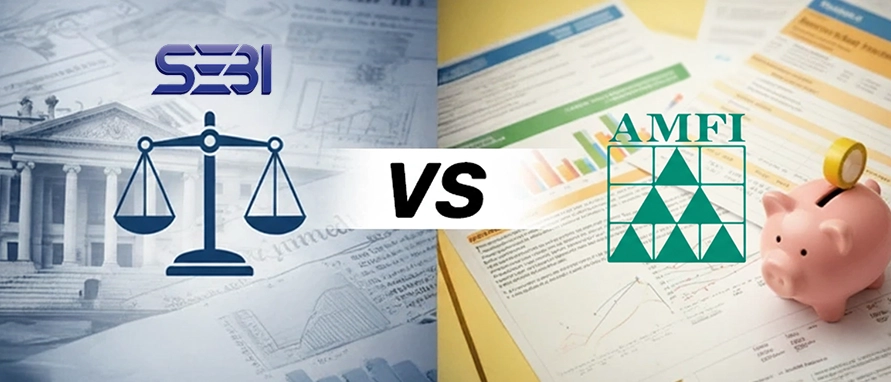-
Our ProductsLoansCardsInsuranceInvestmentsStock MarketElectronics MallCIBIL ScoreKnowledge CentreAcademyCalculators
- Our Services
- My Account
- Discover
Free Cash Flow (FCF)
What Is Free Cash Flow
Free Cash Flow (FCF) is the amount of cash that a company generates from its operations after paying for capital expenditure (CapEx). In simple terms, it represents the cash left over once a business has covered its costs for maintaining and upgrading assets like property, plant, and equipment.
Unlike accounting profit, which is based on accrual principles and can include non-cash items such as depreciation, FCF focuses purely on cash movement. This makes it a useful measure for evaluating a company’s capacity to meet financial obligations, invest in future projects, or strengthen its balance sheet. FCF is widely used in financial analysis as it highlights real liquidity and financial flexibility.
Types of Free Cash Flow
Free Cash Flow can be classified into two major types, each serving a specific purpose in financial analysis:
Free Cash Flow to Firm (FCFF)
This measures the cash available to all providers of capital — both equity shareholders and debt holders. It is commonly used in valuation models like Discounted Cash Flow (DCF), which assess the total enterprise value of a business.
Free Cash Flow to Equity (FCFE)
This shows the portion of cash flow left specifically for equity shareholders after accounting for debt repayments, interest obligations, and new borrowings. FCFE provides insights into the financial resources that may be available for shareholder-related activities.
Understanding the distinction helps stakeholders identify whether they are evaluating overall business health (FCFF) or shareholder-specific outcomes (FCFE).
How to Calculate Free Cash Flow
There are two common methods of calculating Free Cash Flow, depending on the available data:
Basic Formula (Cash Flow Statement Approach)
FCF = Operating Cash Flow – Capital Expenditure
This formula directly uses figures from the company’s cash flow statement.
EBIT-based Formula (Income Statement Approach)
FCF = EBIT × (1 – Tax Rate) + Depreciation & Amortisation – Change in Working Capital – Capital Expenditure
Here, analysts adjust operating profits (EBIT) for taxes, non-cash expenses, and working capital changes before deducting CapEx.
Example:
If a company reports:
Operating Cash Flow: ₹1,000 Crores
Capital Expenditure: ₹300 Crores
Then, Free Cash Flow = ₹1,000 Crores – ₹300 Crores = ₹700 Crores.
This shows that the company has ₹700 Crores in surplus cash after accounting for operational and capital expenses.
What Does Free Cash Flow Indicate
Free Cash Flow is a key indicator of a company’s financial strength.Consistent FCF may indicate that a business has funds to manage operations and expand without significant external financing.
It may also reflect a company’s capacity to:
Repay existing debt obligations
Allocate funds towards dividends or share repurchases
Invest in research, acquisitions, or new projects
Maintain operational resilience during downturns
By analysing FCF trends, stakeholders can evaluate whether a company is positioned to sustain long-term financial stability.
Interpreting Free Cash Flow
The interpretation of Free Cash Flow depends on whether the figure is positive or negative, along with the industry context:
Positive Free Cash Flow
Indicates that the company is generating excess cash after covering operational and capital expenses. This often reflects financial stability, though very high FCF could also suggest that a business is under-investing in future projects.
Negative Free Cash Flow
Suggests that expenses, particularly capital expenditure, exceed operating cash inflows. While this may raise concerns about liquidity, it does not always mean poor performance. Fast-growing companies often report negative FCF due to heavy investments in expansion, which can yield long-term benefits.
Thus, interpreting FCF requires considering trends, industry benchmarks, and the company’s growth stage.
Example of Free Cash Flow
Let us consider a company with the following figures for a financial year:
Operating Cash Flow: ₹800 Crores
Capital Expenditure: ₹250 Crores
Free Cash Flow = ₹800 Crores – ₹250 Crores = ₹550 Crores
This means the company generated ₹550 Crores in cash after paying for new equipment, property, or infrastructure. The available cash can then be allocated to different financial strategies such as debt reduction, reinvestment, or shareholder-related initiatives.
Importance of Free Cash Flow
Free Cash Flow holds significant importance in both corporate finance and financial analysis:
Valuation Models: FCF is central to the Discounted Cash Flow (DCF) model, which estimates the intrinsic value of a business based on projected future cash flows.
Financial Decision-Making: By reviewing FCF trends, analysts can understand whether a company is capable of funding growth without excessive reliance on debt.
Dividend Policies: Stable FCF can provide companies with flexibility for dividend or share buyback policies.
Planning & Strategy: Management teams rely on FCF data to plan for expansion, acquisitions, or debt reduction strategies.
Limitations of Using Free Cash Flow
Despite its advantages, Free Cash Flow has certain limitations:
Volatility: FCF can fluctuate significantly due to seasonality, business cycles, or irregular capital spending
Management Decisions: Timing of capital expenditure can affect reported FCF
Growth Companies: Early-stage businesses investing heavily in expansion may show negative FCF, making the metric less useful in isolation
- Industry Variations: Capital-intensive sectors may have persistently lower FCF compared to service-based industries
Therefore, while FCF is useful, it should always be evaluated alongside other financial ratios and indicators.
Conclusion
Free Cash Flow is an essential metric for understanding a company’s ability to generate surplus cash after meeting its capital investment needs. It provides valuable insights into financial health, growth capacity, and operational strength. However, it should not be assessed in isolation. Combining FCF analysis with other financial ratios ensures a balanced and accurate evaluation of a company’s performance.
FAQs
Is Free Cash Flow important?
Free Cash Flow is considered an important metric as it highlights how much cash remains after covering business expenses and investments. It provides insights into financial flexibility.
What is Free Cash Flow to Equity?
Free Cash Flow to Equity (FCFE) is the cash left for shareholders after accounting for expenses, reinvestment, and debt repayments. It indicates the amount that may be available for shareholder-related activities.
How is Free Cash Flow evaluated?
There is no universal benchmark. Consistent positive FCF, when compared with industry peers, provides context for financial analysis..
How do I calculate Free Cash Flow to Equity (FCFE)?
FCFE = Free Cash Flow to Firm – Net Debt Repayments + New Debt Issued. This formula adjusts for changes in leverage to isolate the portion available to shareholders.
What does the Price to Free Cash Flow (P/FCF) ratio show?
The Price to Free Cash Flow ratio compares a company’s market capitalisation to its free cash flow. It is one of several valuation tools used in financial analysis.
Can Free Cash Flow be manipulated?
Yes, Free Cash Flow figures can be influenced by management decisions, such as delaying capital expenditure. For this reason, analysts often examine FCF trends over multiple years for accuracy.
With a Postgraduate degree in Global Financial Markets from the Bombay Stock Exchange Institute, Nupur has over 8 years of experience in the financial markets, specializing in investments, stock market operations, and project management. She has contributed to process improvements, cross-functional initiatives & content development across investment products. She bridges investment strategy with execution, blending content insight, operational efficiency, and collaborative execution to deliver impactful outcomes.
Related Blogs

Roshani Ballal

Geetanjali Lachke

Roshani Ballal

Geetanjali Lachke

Geetanjali Lachke

Nupur Wankhede

Roshani Ballal

Roshani Ballal

Roshani Ballal

Nupur Wankhede

Anshika

Anshika

Nupur Wankhede

Nupur Wankhede

Anshika

Nupur Wankhede

Anshika

Geetanjali Lachke

Roshani Ballal

Anshika

Anshika

Nupur Wankhede

Anshika

Nupur Wankhede

Nupur Wankhede

Geetanjali Lachke

Roshani Ballal

Roshani Ballal

Geetanjali Lachke

Nupur Wankhede

Anshika

Nupur Wankhede

Nupur Wankhede

Nupur Wankhede

Nupur Wankhede

Nupur Wankhede

Nupur Wankhede

Nupur Wankhede

Geetanjali Lachke

Geetanjali Lachke

Roshani Ballal

Nupur Wankhede

Anshika

Anshika

Nupur Wankhede

Nupur Wankhede

Nupur Wankhede

Nupur Wankhede

Nupur Wankhede

Nupur Wankhede

Nupur Wankhede

Nupur Wankhede

Nupur Wankhede

Nupur Wankhede

Nupur Wankhede

Nupur Wankhede

Roshani Ballal

Anshika

Nupur Wankhede

Geetanjali Lachke

Nupur Wankhede

Nupur Wankhede

Anshika

Anshika

Nupur Wankhede

Anshika

Anshika

Nupur Wankhede
.webp)
Nupur Wankhede

Nupur Wankhede

Nupur Wankhede

Nupur Wankhede

Nupur Wankhede

Nupur Wankhede
.webp)
Nupur Wankhede

Nupur Wankhede

Nupur Wankhede

Nupur Wankhede
-in-India.webp)
Nupur Wankhede

Nupur Wankhede

Nupur Wankhede

Anshika

Nupur Wankhede

Nupur Wankhede

Anshika

Anshika

Nupur Wankhede

Nupur Wankhede

Nupur Wankhede

Nupur Wankhede

Nupur Wankhede

Nupur Wankhede

Nupur Wankhede

Nupur Wankhede

Anshika

Nupur Wankhede

Nupur Wankhede

Nupur Wankhede

Nupur Wankhede

Anshika

Nupur Wankhede

Nupur Wankhede
-Meaning-Importance.webp)
Nupur Wankhede

Anshika

Nupur Wankhede

Anshika

Nupur Wankhede

Nupur Wankhede

Nupur Wankhede

Geetanjali Lachke

Geetanjali Lachke

Geetanjali Lachke

Anshika

Anshika

Nupur Wankhede

Nupur Wankhede
-portfolio.webp)
Nupur Wankhede

Anshika

Roshani Ballal

Geetanjali Lachke

Geetanjali Lachke

Geetanjali Lachke

Geetanjali Lachke

Geetanjali Lachke

Roshani Ballal

Geetanjali Lachke

Geetanjali Lachke

Geetanjali Lachke

Roshani Ballal

Roshani Ballal

Geetanjali Lachke

Roshani Ballal

Roshani Ballal

Roshani Ballal

Roshani Ballal

Roshani Ballal

Roshani Ballal




















.webp)

.webp)




































































.webp)



.webp)












.webp)




.webp)
































